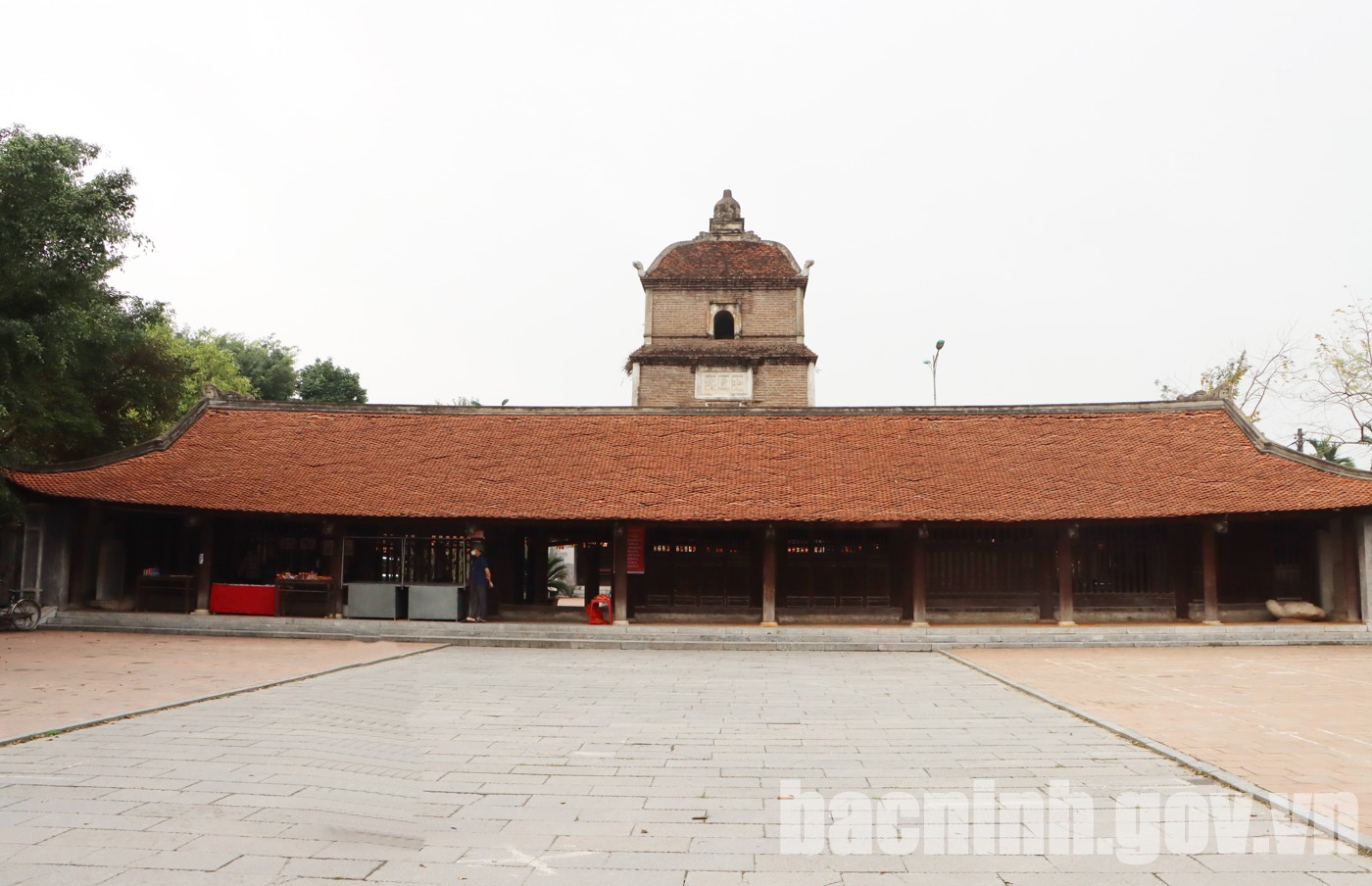Kinh Bac - Birthplace of Vietnamese Buddhism
Bac Ninh - Kinh Bac is the land of thousands of generations of our country, where historic traditional cultural values have been passed down for thousands of years. This is also the cradle of the essence of earth and heaven, such as the adoring and poetic folk melodies of Quan Ho, the humble cuisine that makes people's hearts flutter, and the traditional Buddhist culture of Vietnam.

Dau Pagoda.
Kinh Bac is regarded as a region to assist the development of Buddhism in Vietnam, since it was once home to a significant and old Buddhist cultural center, such as Luy Lau Fortress, Dau Pagoda, But Thap Pagoda, Phat Tich Pagoda and many others.
“No matter where somebody goes,
I keep returning each time I see the Dau Pagoda tower.
Whoever exchanges hundreds of jobs
Remember to visit the Dau Festival on the eighth day.”
As a native of Kinh Ky, it is impossible not to mention the Dau Pagoda - one of Vietnam's oldest pagodas. Dau Pagoda's construction began in the early years of 187 A.D, and since then, it has seen more than 2000 years of ups and downs in history. This location was frequented by Indian monks who instructed Buddhism directly and Chinese monks who established a meditation in Viet Nam. The Dau Pagoda is now situated in Khuong Tu hamlet, Thanh Khuong village, Thuan Thanh district, Bac Ninh province. Dau Pagoda, together with Luy Lau Fortress, early became an important Buddhist center in our country.
Vietnamese Buddhist culture flourished and spread widely throughout the Ly and Tran dynasties. Additionally, another Buddhist shrine, the Phat Tich Pagoda, is also located on the Kinh Ky territory. Legend has it that this ancient temple was built in 1057 with numerous massive towers. This location is related with the myth that "Tu Thuc gap tien " and the appearance of Amitabha Buddha. The pagoda was constructed in the Ly dynasty by King Ly Thanh Tong. At that time, the dynasties used the Phat Tich Pagoda for important political tasks including planning the first doctoral candidate exams. Phat Tich is currently situated on the southern slopes of Lan Kha in Tien Du District, Bac Ninh Province. At first glance, it may appear to be like other temples, but after more than a thousand years of ups and downs with the history of the nation, Phat Tich has become one of Vietnam's largest Buddhist centers. This location leaves a strong impression with the Great Buddha statue, a 27-meter-tall Buddha monument put on the top of Lan Kha Mountain and based on the Amitabha Buddha statue worshiped in the pagoda. The statue has established a record for being Southeast Asia's tallest statue. Visitors can admire the oddly stunning landscape, multiple and majestic mountains.
When Indian Zen masters brought Buddhist culture to VietNam in the early years of A.D, our country's Buddhist architecture was also affected by it. When it comes to Dau Pagoda, the temple has been affiliated with our country for over 2000 years. This location was surrounded by four lines of rectangular connection buildings designed in the "Noi cong ngoai quoc" architectural style with three main houses: front square, flaming incense, and upper hall. The adoring sculptures are an unforgettable memory for visitors who come here. A statue of Ba Dau, also known as Saintess Phap Van, stands in the center of the pagoda and is majestic, serene, bronze in hun, and almost 2 meters high. Additionally, the tower is constructed using large-sized bricks that are manually roasted to resemble the hue of an old crock pot. Time and bitter conflicts have stripped away the tower's upper six floors, leaving only three lower floors, around 17m high but still majestic, standing stubbornly in the midst of the country's history. Each side of the square tower base is almost 7 meters long, and the bottom floor has four arched doorways. Two bronze bells, one from 1793 and the other from1817, are hung on the tower. In each of the four corners, there are four 1.6-meter-high statues of Thien Vuong. In front of the tower is a square stele erected in 1738 on the right, and a statue 1.33 m long and 0.8 m high on the left. The only thing left over from the Han Dynasty is this statue. Furthermore, it is impossible not to mention the sculptural architecture of But Thap Pagoda, one of the largest-scale works in the Northern Delta. The Buddha hall of the pagoda is practically pristine of an ancient Vietnamese temple, consisting of 10 buildings set on an axis more than 100m long through the Tam Quan gate, to the two-story steeple, eight roofs. The pagoda is still supported by a load-bearing timber frame on a popular stone podium, surrounded by alive objects that are designed to look lively and unique, embellished everywhere on wooden materials, stone, in architecture, and in altars. Particularly, there are 26 stone carvings on the alley of the Thuong Dien boat, 12 paintings on the stone bridge leading to the Thich Thien Am Court, and 13 paintings at the base of the Bao Nghiem tower. The But Thap Pagoda has 51 stone sculptures in total, all of which share a common material, style, and chronological order despite having different topics. Only then can we see that the ancient Buddhist architectures of Vietnam were always inherited and created by the Indian and Chinese Zen masters at that time.
“Serene and quiet is the village
The scenery of Bac Ninh is picturesque and beautiful.”
For generations, Bac Ninh - Kinh Bac has been the cradle of Vietnamese Buddhism. Authorities have continuously maintained and promoted all of our country's cultural traditions, passing down to the next generation fascinating and practical traditional lessons and igniting their interest with local culture in this land of geniuses.






